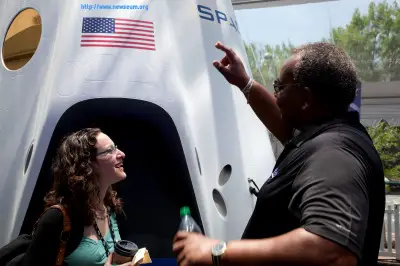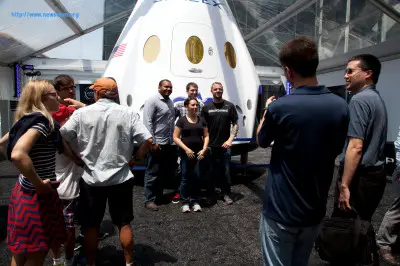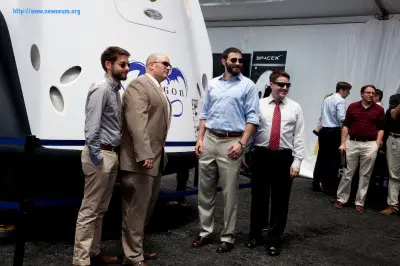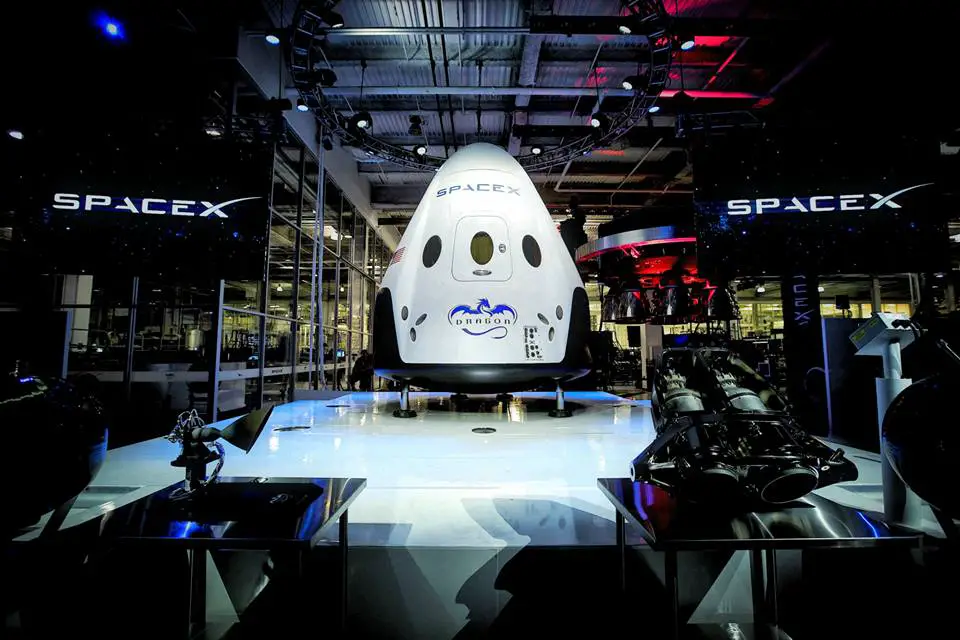 When Elon Musk, PayPal and SpaceX founder, unveiled the Dragon V2 on May 29, my heart jumped into my throat. There it was, the next innovation in manned spacecraft. Under development since 2010 and originally called DragonRider, the Dragon V2 was finally complete and awaiting occupants ready to brave space. As Techaeris writer Chris Prophet reported on June 10, Dragon V2 was on display at the Newseum in Washington, DC for one day only on June 11. Lucky visitors from across the world gathered to get a peek at the manned capsule.
When Elon Musk, PayPal and SpaceX founder, unveiled the Dragon V2 on May 29, my heart jumped into my throat. There it was, the next innovation in manned spacecraft. Under development since 2010 and originally called DragonRider, the Dragon V2 was finally complete and awaiting occupants ready to brave space. As Techaeris writer Chris Prophet reported on June 10, Dragon V2 was on display at the Newseum in Washington, DC for one day only on June 11. Lucky visitors from across the world gathered to get a peek at the manned capsule.
 Dragon V2 can hold up to 7 occupants, and represents a huge leap forward in space technology for a number of reasons. Primary among these are the SuperDraco thrusters that allow the Dragon V2 to “land anywhere on Earth with the accuracy of the helicopter,” Musk says. “It really takes things to the next level.” The original Dragon capsule was a proof of concept for SpaceX that helped fill the gap left by the closure of the NASA Space Shuttle program. The Dragon V2 aims to not only replace the Space Shuttle completely, but help move along space technology by privatizing its development and advancing it at a faster pace than governmental budgets and red tape allow.
Dragon V2 can hold up to 7 occupants, and represents a huge leap forward in space technology for a number of reasons. Primary among these are the SuperDraco thrusters that allow the Dragon V2 to “land anywhere on Earth with the accuracy of the helicopter,” Musk says. “It really takes things to the next level.” The original Dragon capsule was a proof of concept for SpaceX that helped fill the gap left by the closure of the NASA Space Shuttle program. The Dragon V2 aims to not only replace the Space Shuttle completely, but help move along space technology by privatizing its development and advancing it at a faster pace than governmental budgets and red tape allow.
This is apparent when one sees even the pared down feature list for the Dragon V2:
- Eight SuperDraco engines that produce 16,000 lb of thrust
- Four extensible landing legs
- 7-person occupancy
- 3rd-gen PICA-X heat shield
- Reusable up to 10 flights before refurbishment required
- Autonomous space station docking
- Swiveling tablet computers for pilot and co-pilot crew control
- Reusable, hinged, pivoting nose cone
 It’s clear that Musk and SpaceX are intent on creating a second space race, this time among private companies. Back in April, SpaceX successfully launched the first reusable rocket, the Falcon 9, which executed an advanced and very experimental maneuver that guided the launch rocket into the Atlantic Ocean instead of to imminent destruction upon impact with the ground. Though costing a significant amount of money to develop, both the Dragon V2 and the Falcon 9 aim to revolutionize spaceflight by making it less costly to launch and maintain a fleet of spacecraft. This has sent both private companies and government entities alike scurrying to keep up with Musk’s beloved space company.
It’s clear that Musk and SpaceX are intent on creating a second space race, this time among private companies. Back in April, SpaceX successfully launched the first reusable rocket, the Falcon 9, which executed an advanced and very experimental maneuver that guided the launch rocket into the Atlantic Ocean instead of to imminent destruction upon impact with the ground. Though costing a significant amount of money to develop, both the Dragon V2 and the Falcon 9 aim to revolutionize spaceflight by making it less costly to launch and maintain a fleet of spacecraft. This has sent both private companies and government entities alike scurrying to keep up with Musk’s beloved space company.
Special thanks to the Newseum for sharing these photos of visitors to the Dragon V2 on display at their location!
Last Updated on November 27, 2018.










